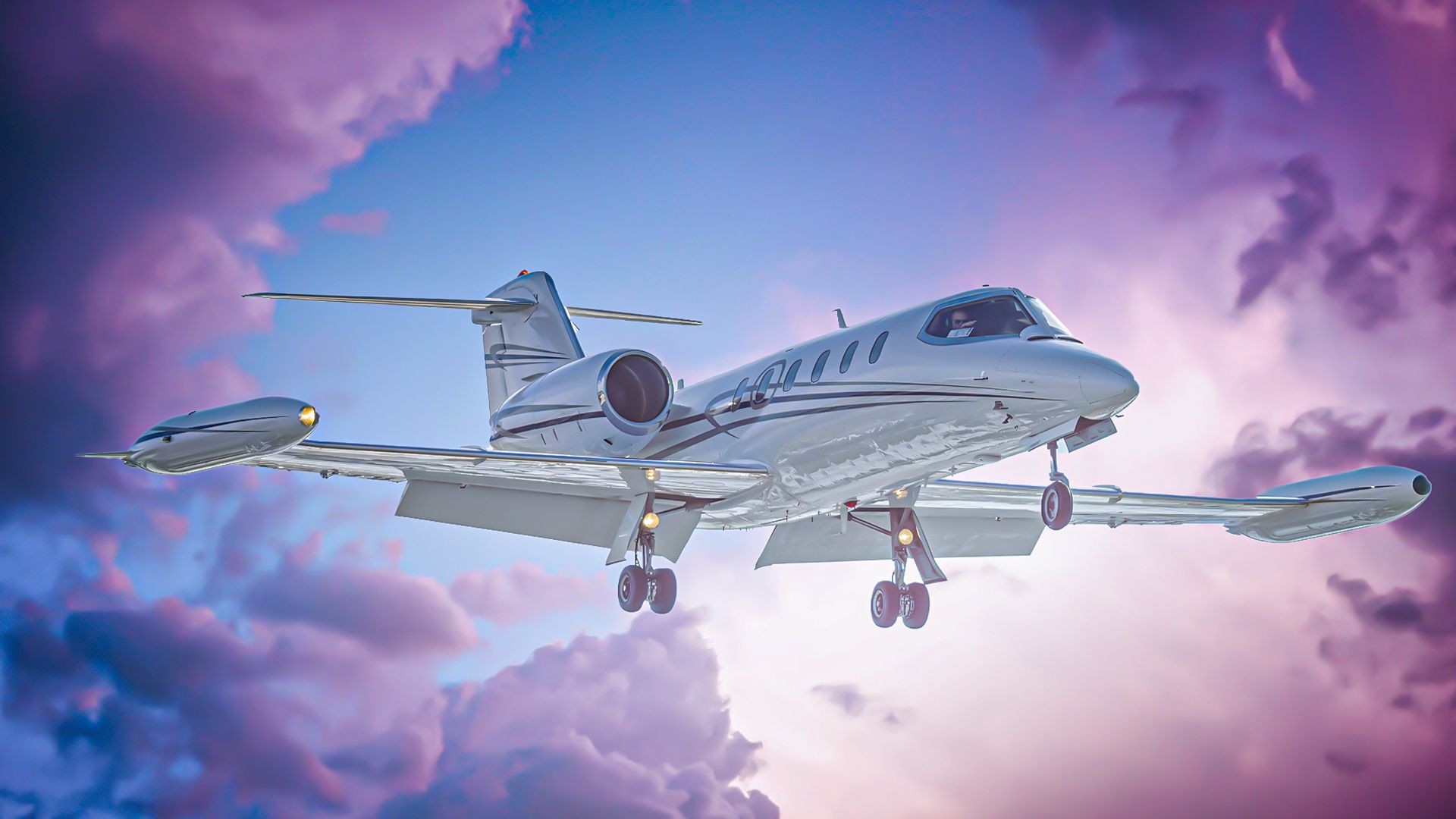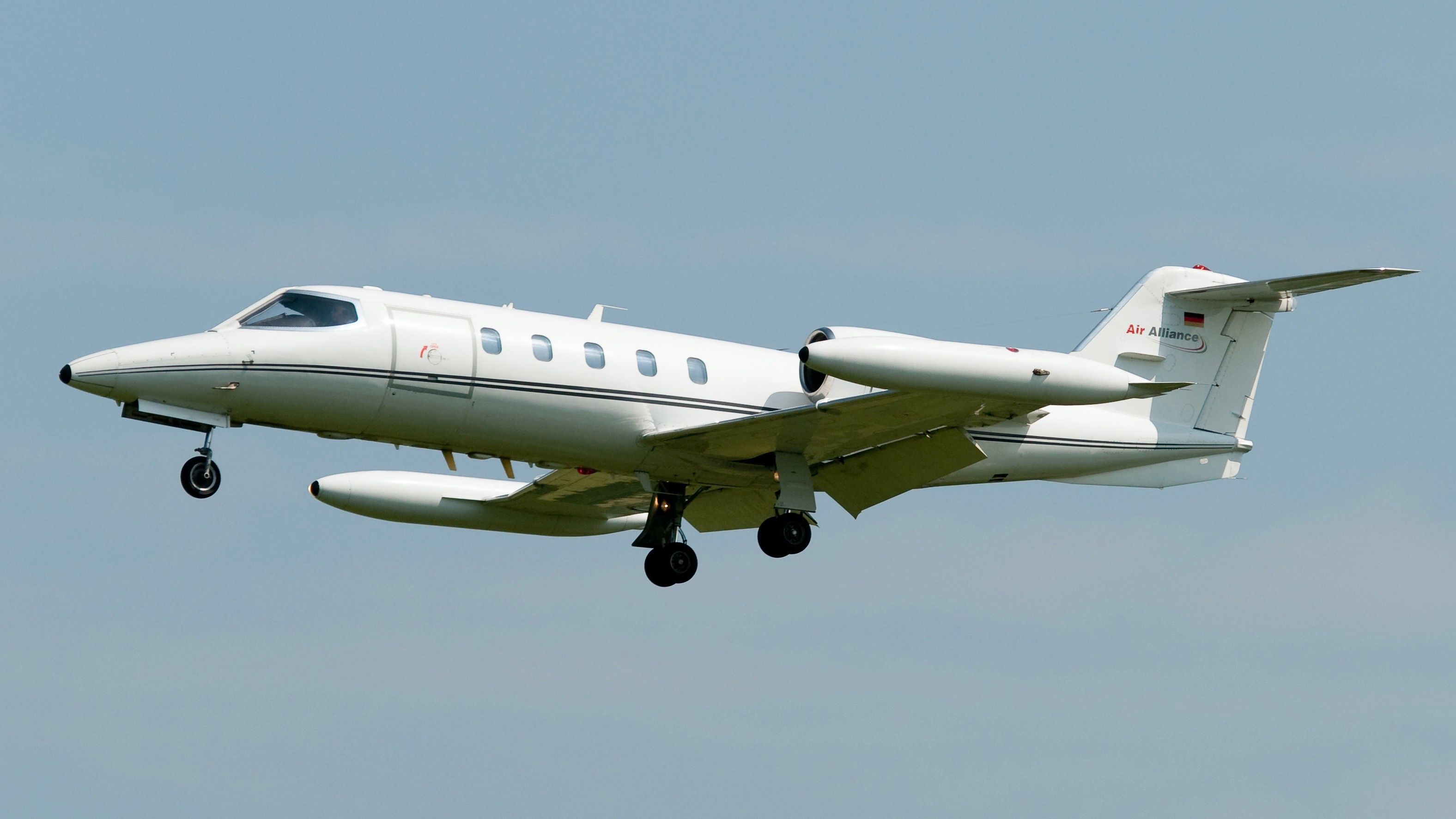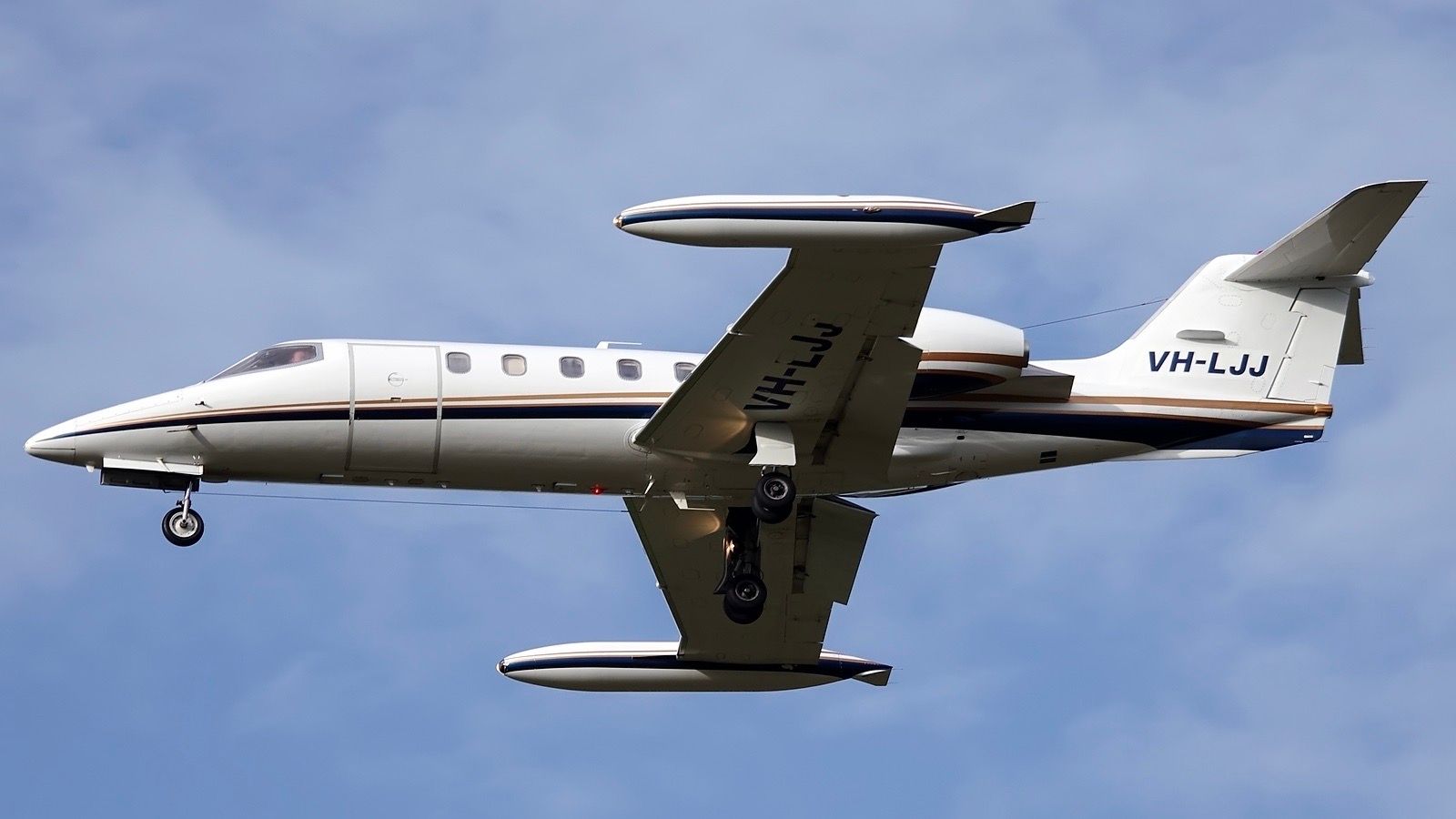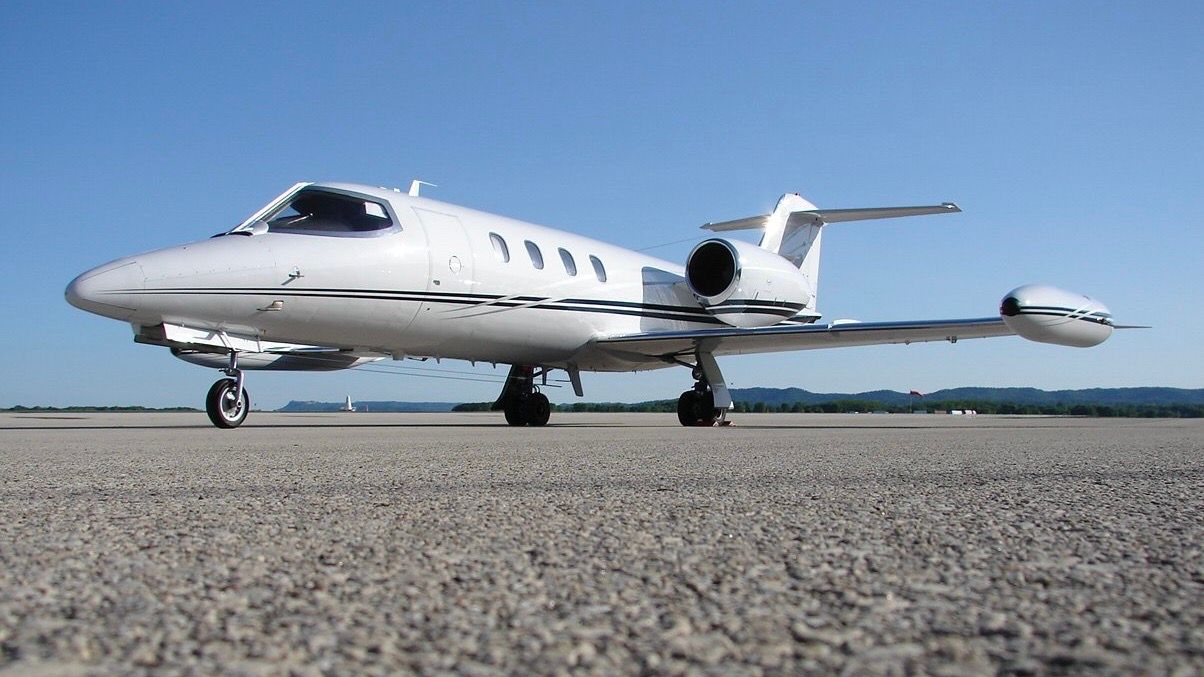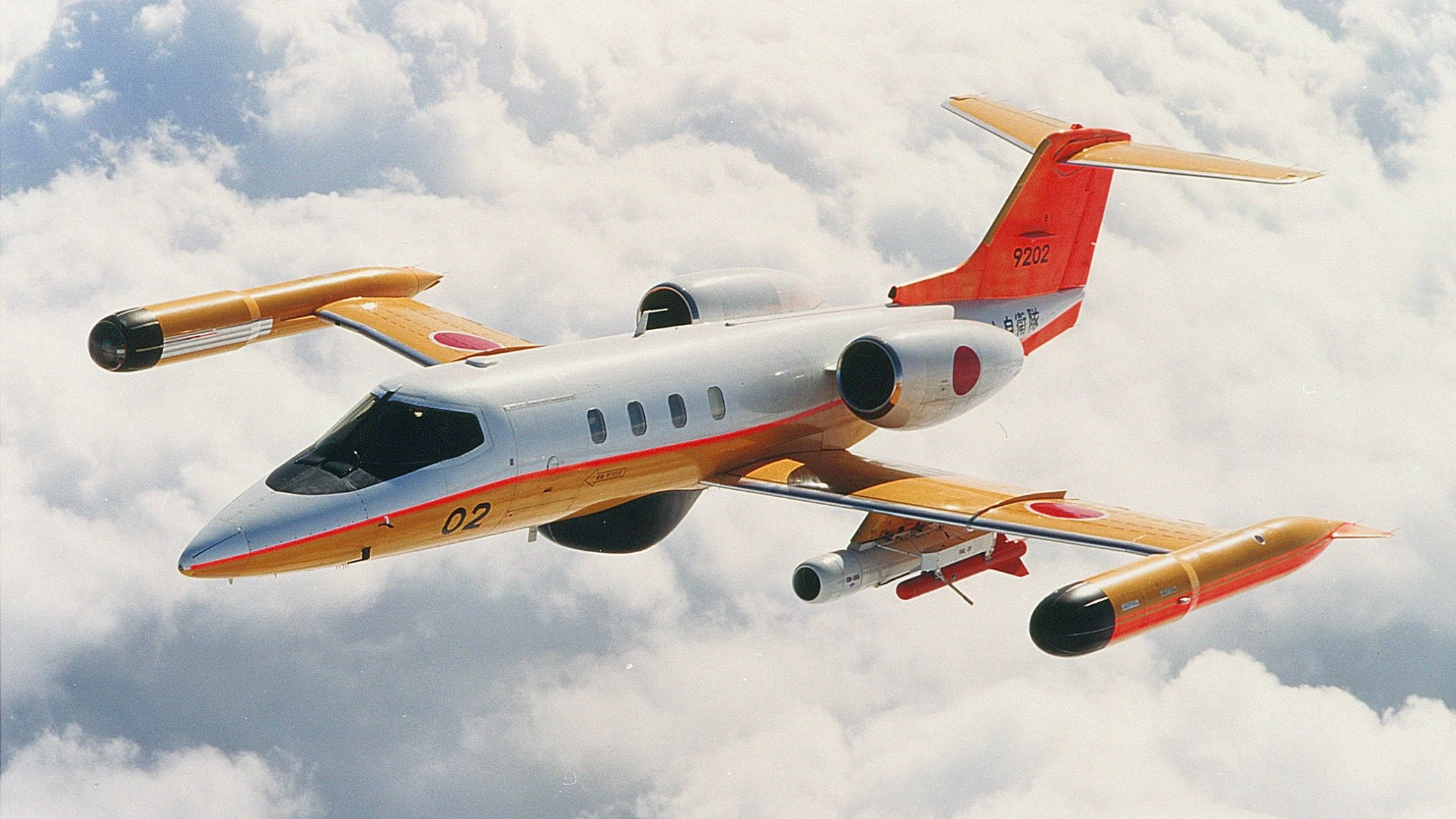Summary
- The Learjet 35 was the most produced Learjet, with 738 units built over its 20-year production span.
- The Learjet 35 has a range of 2,850 nautical miles and can comfortably seat 6-8 passengers.
- The Learjet 35 remains popular due to its reliability, speed, and long range – key features admired by world leaders and the military.
Learjets have been produced since the early 1960s and the Learjet family has five distinctive lines from the Learjet 20 series through to the Learjet 70 series. But which Learjet has been produced the most? Let’s take a look in more detail.
A little background
The US manufacturer first released the Learjet 35 in 1973 and it was one of the fastest medium-haul jets of its time. It is a multi-functional business jet built between 1973 and 1993 and is also popularly used in military transportation. Bombardier acquired Learjet in 1990 and Learjet is now a subsidiary. More of the aircraft have been sold than any other Learjet and many are still in service after 50 years.
Its first flight took place on 22 August 1973 and over the 20-year production period, 738 Learjet 35 aircraft were built. It was certified by the FAA in July 1974. The Learjet 35 was derived from the Learjet 25 and was 13 inches longer than the previous model. Learjet built 64 of the original LearJet 35.
–
The finer details
The aircraft has two Garrett TFE731-2 turbofan engines that are mounted in nacelles on the side of the rear fuselage. They produce 3,500 pounds of thrust. The wings are fitted with single slotted flaps and wing tip fuel tanks, that make it easily identifiable. The comfortable cabin seats between six and eight passengers. The aircraft’s range is 2,850 nautical miles and its average mission is 145-150 minutes, compared to other Learjets which average 60-90 minutes flight.
Other Learjet variants
The model 35A has two Garrett TFE731-2-2B engines and wingtip fuel tanks. They give it a range of 2,789 miles and a maximum speed of 519 miles per hour. it was introduced in 1976 to replace the original Learjet 35. The last Learjet 35A to leave the production line in 1993 was series number 677.
The Learjet 36 is identical to the Learjet 35 but has a larger fuselage fuel tank. This gives the aircraft 500 miles more range but decreases the amount of space in the cabin. Ir was certified by the FAA in July 1974. The Learjet 36A had upgraded engines and a higher maximum gross weight. It was introduced in 1976 to replace the Learjet 36.
Timeline:
- Learjet 35 introduced 1973
- Learjet 35A replaced the original in 1976
- Learjet 36 replaced the 35A in 1976
- LearJet 36A replaced the 36 in 1976
Military versions include the C-21A (US) and the U-36A (Japan).
Aircraft Specifications
General characteristics
- Crew: two (pilot and copilot)
- Length: 48 ft 8 in (14.83 m)
- Wingspan: 39 ft 6 in (12.04 m) (over tip tanks)
- Height: 12 ft 3 in (3.73 m)
- Wing area: 253.3 sq ft (23.53 m2)
- Aspect ratio: 5.74:1
- Airfoil: NACA 64A-109 (mod)
- Empty weight: 9,154 lb (4,152 kg)
- Max takeoff weight: 18,000 lb (8,165 kg)
- Fuel capacity: 1,110 US gal (920 imp gal; 4,200 L) usable fuel
- Powerplant: 2 × Garrett TFE731-2-2B turbofans, 3,500 lbf (16 kN) thrust each
Performance
- Maximum speed: 471 kn (542 mph, 872 km/h) at 25,000 ft (7,600 m)
- Cruise speed: 418 kn (481 mph, 774 km/h) at 45,000 ft (14,000 m) (econ. cruise)
- Stall speed: 96 kn (110 mph, 178 km/h) (wheels and flaps down)
- Range: 2,857 nmi (3,288 mi, 5,291 km) (4 passengers)
- Service ceiling: 45,000 ft (14,000 m)
- Rate of climb: 4,525 ft/min (22.99 m/s) at sea level
- Take-off run to 30 ft (9 m): 4,784 ft (1,458 m)
- Landing run from 50 ft (15 m): 2,884 ft (879 m)
Useage of the Learjet 35
The Learjet 35 is used by air taxi operators, for private use or corporate use and by business aviation operators. It is popular as a private jet because of its range (2,056 miles non-stop) and its take-off and landing performance. It can operate on short runways, has a fast cruise and handles well with a low fuel burn. The aircraft is also used by the military. Operators include the Finnish Air Force, the United States Air Force and the Royal Thai Air Force.
World records
In 1976, US professional golfer, Arnold Palmer used a Learjet 35 to create a new round-the-world record of 22,894 miles. The round-the-world trip took 57 hours, 25 minutes and 42 seconds. On February 12, 1996, a model 36A owned by cable television founder Bill Daniels completed a round-the-world flight in 49 hours, 21 minutes and 8 seconds. The record remains the same to this day and the aircraft is on display at Denver International Airport.
Final notes
As of 2021, more than 70% of the Learjet 35 fleet of 52 remaining aircraft, have been in service for more than 40 years. This is due to Learjet’s engineering and robust design. The Learjet 35 is well known for its reliability, high speed and long range as well as its overall performance. The Learjet 35 was a popular choice for world leaders and for military use.
Although production of the aircraft ceased in 1994, there are still over 500 in service despite being almost 50 years old. In 2018, 1980s Leajet 35 could be obtained for just $500,000. The Learjet 35 is Bombardier’s most successful light jet and still one of the fastest in its category in the private jet market.

